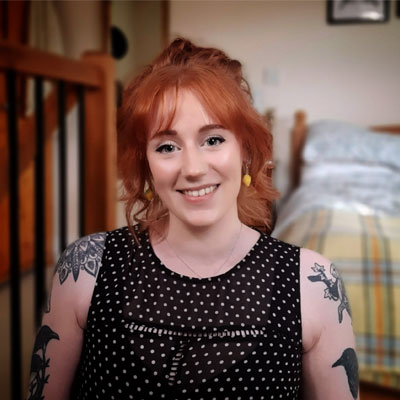
For many of us, yoga conjures an image of a class full of people, led by a bendy instructor with a calming voice. But there are other ways you can incorporate the practice of yoga into your day, and indeed ways that you can privately practice without even leaving your bed.
I spoke to Sophia Drozd, a yoga teacher and founder of the Yoga for Pain app, which makes yoga accessible for people with chronic illnesses. Drozd’s app is full of short to medium-length classes, yoga that can be performed in a chair or on the floor, plus breathwork and meditation for those low-energy days when movement feels out of reach. I have a chronic illness, so I was particularly interested in Drozd’s series of bed yoga classes.
When I spoke to Drozd, I asked her how I should go about implementing daily yoga into my life and she recommended starting with this quick practice every morning before I even get up to go the toilet. A daily commitment may seem like a lot, but for something as simple as this practice, it's definitely doable.
How to do it
“Take time to tune in to your body,” says Drozd. “Take a moment to notice how you feel and to bring awareness to your breath.” Breathwork is an important part of yoga, and I’ve discovered how helpful it can be when dealing with an intense day.
Drozd explains, in the context of chronic illness, that your breath can be a useful indicator of how your body is doing that day. If you can take a deep breath without experiencing pain or discomfort, that could be a positive sign for a good day ahead, or if you struggle to inhale and feel short of breath, it might be a harder day and a sign to take things slowly.
“Once you've tuned into the breath, I recommend tuning into your pain,” says Drozd. “Scan your body, noticing where you have pain that day. Is that normal for you or is it different?” She adds that by noticing what your level of pain is like in those areas, you can keep track of changes day-to-day and make choices accordingly.
Without the context of chronic pain, this is still a helpful practice, because body scanning is a fantastic way to ground yourself and check in with your body.
Start your week with achievable workout ideas, health tips and wellbeing advice in your inbox.
For the next step, Drozd encourages you to invite gentle movements to the body. “Wiggle your fingers, rock your head, shift a little weight in your hips from one side to the other, or shift a little weight in the shoulders. If all of that feels good, you can continue,” she says. If you reach this point and decide you’ve had enough, Drozd says you can stop and just continue doing breathwork until you feel ready to get out of bed.
“If you're happy to continue, then you can start focusing more on the joints, doing a bit of joint movement, perhaps welcoming a bit of functional repetitive movement,” says Drozd. At this point, check in with yourself again, and try to notice whether it makes any difference to the way that you are sensing your body, including any pain, your energy levels and how you feel about these things.
Why do it
Drozd says that the purpose of this practice is to bring awareness to the body straight away and tune in to how we feel, which many of us fail to do until later in the day. For those with chronic illness, this can help them choose a path for their day, and for those who do not have a chronic illness, it can still be useful to ground yourself in your body and begin your day with awareness.
She also says that it’s a powerful way to start your day that can break through the negative thought patterns many of us experience when we wake up (particularly when we’re at the mercy of an alarm). Instead of wrenching yourself out of bed and forcing your body to move when it was asleep just seconds ago, this practice encourages you to begin your day with an act of kindness to yourself.
“Although I say this is a morning practice, it can be practiced at any point during your day,” says Drozd. If any activities feel as though they trigger pain or discomfort, or you just feel disconnected from your body, it can be useful to make the conscious effort to tune in with yourself again. How do you feel? Where do you feel it?

Sophia Drozd is the owner and founder of Yoga for Pain (Y4P), and is a qualified yoga teacher, lifelong practitioner and chronic pain warrior. Diagnosed with fibromyalgia, scoliosis and carpel tunnel syndrome, Drozd has lived with pain all of her adult life. She is on a mission to share Y4P, a pioneering yoga app for the chronic pain community, which uses yoga and breathwork to ease pain, paving the way for a more mobile and fulfilling life for its users.

Lou Mudge is a Health Writer at Future Plc, working across Fit&Well and Coach. She previously worked for Live Science, and regularly writes for Space.com and Pet's Radar. Based in Bath, UK, she has a passion for food, nutrition and health and is eager to demystify diet culture in order to make health and fitness accessible to everybody.
Multiple diagnoses in her early twenties sparked an interest in the gut-brain axis and the impact that diet and exercise can have on both physical and mental health. She was put on the FODMAP elimination diet during this time and learned to adapt recipes to fit these parameters, while retaining core flavors and textures, and now enjoys cooking for gut health.
